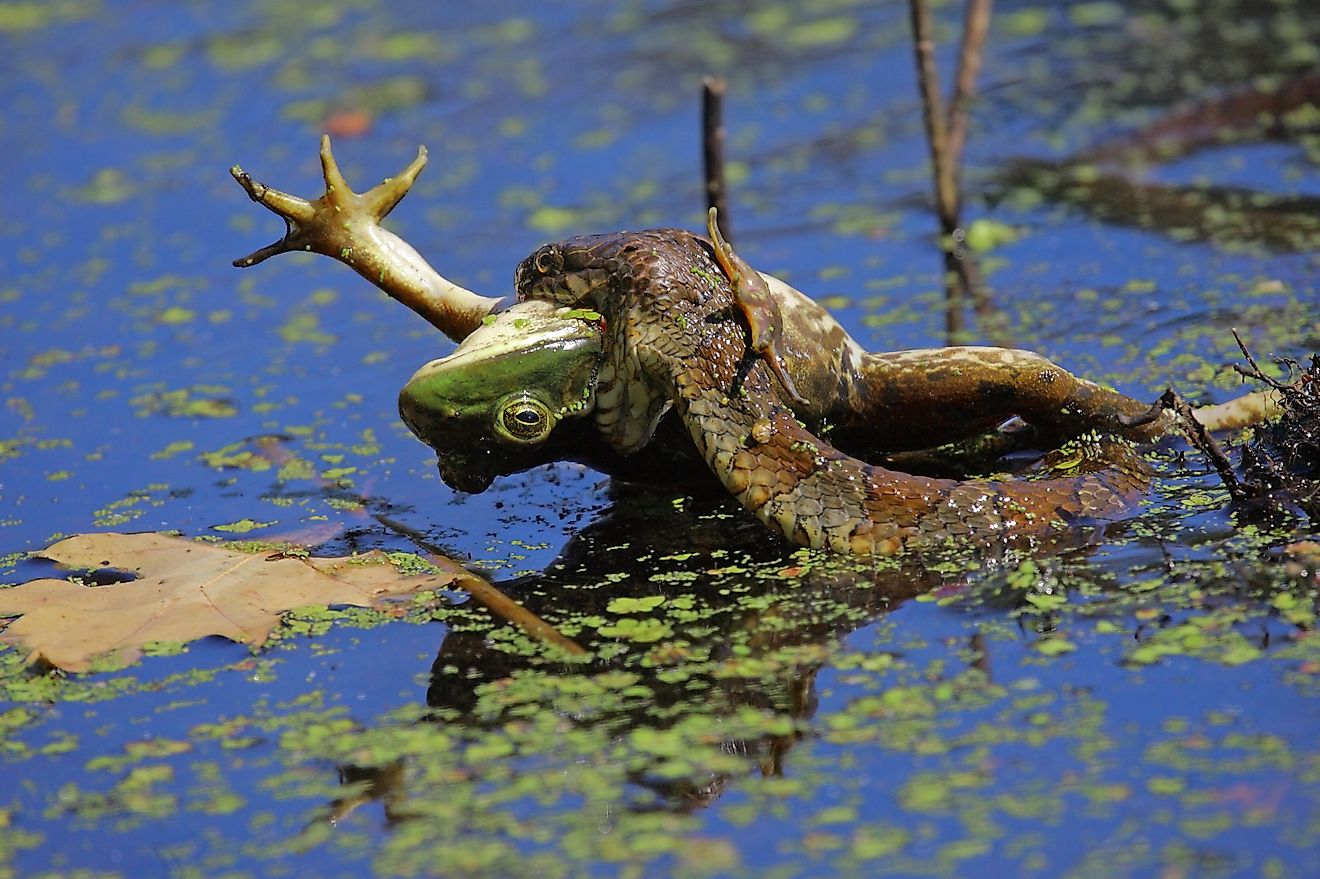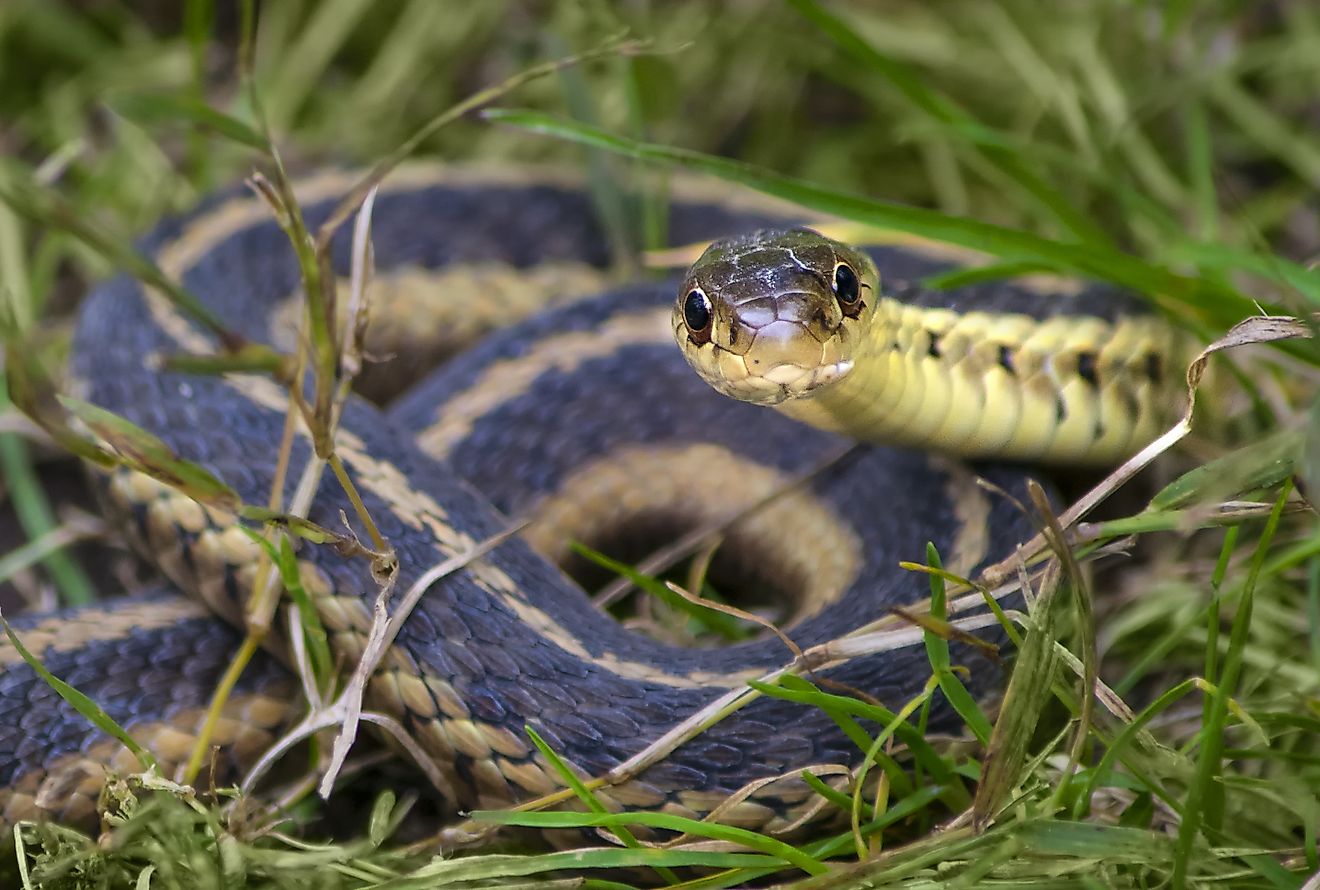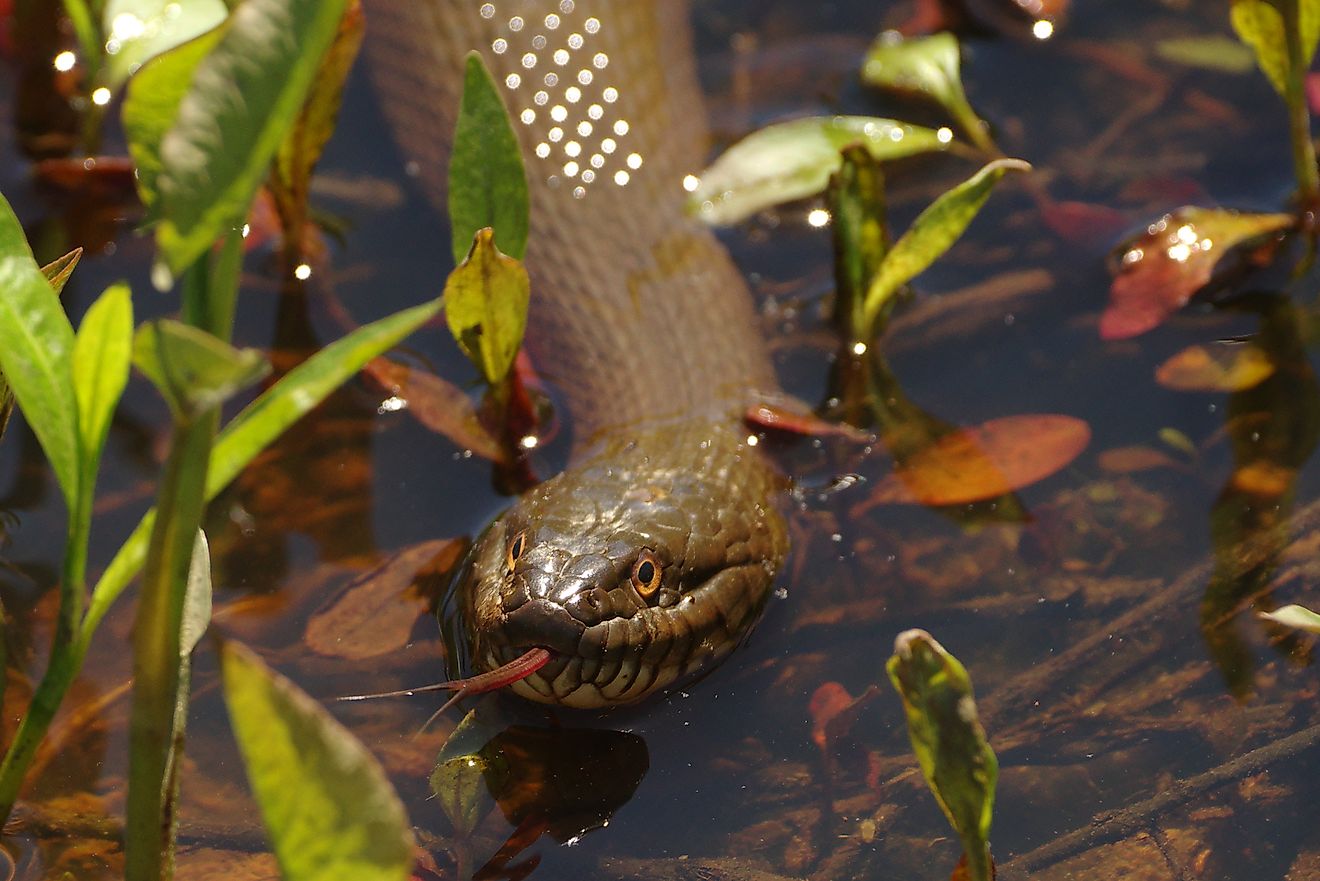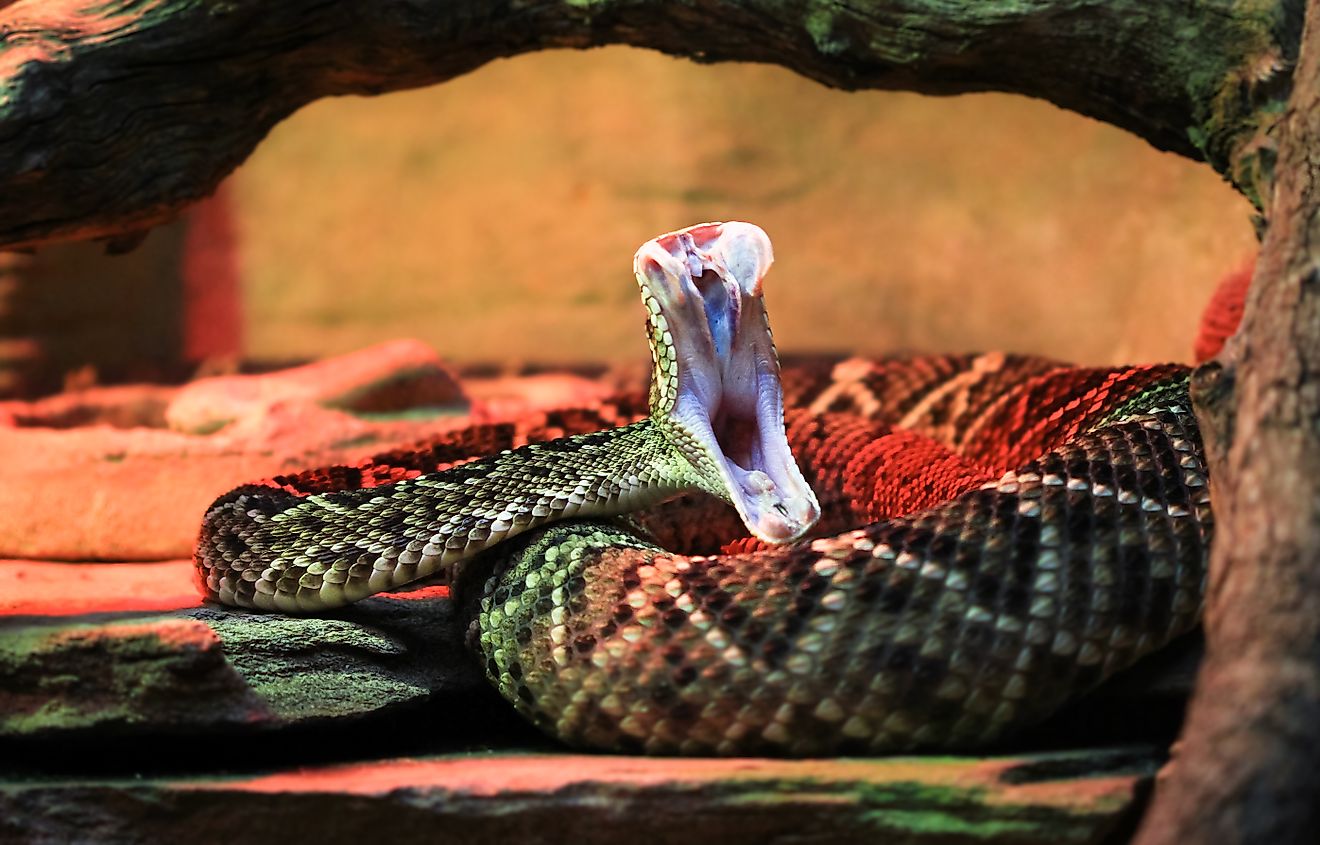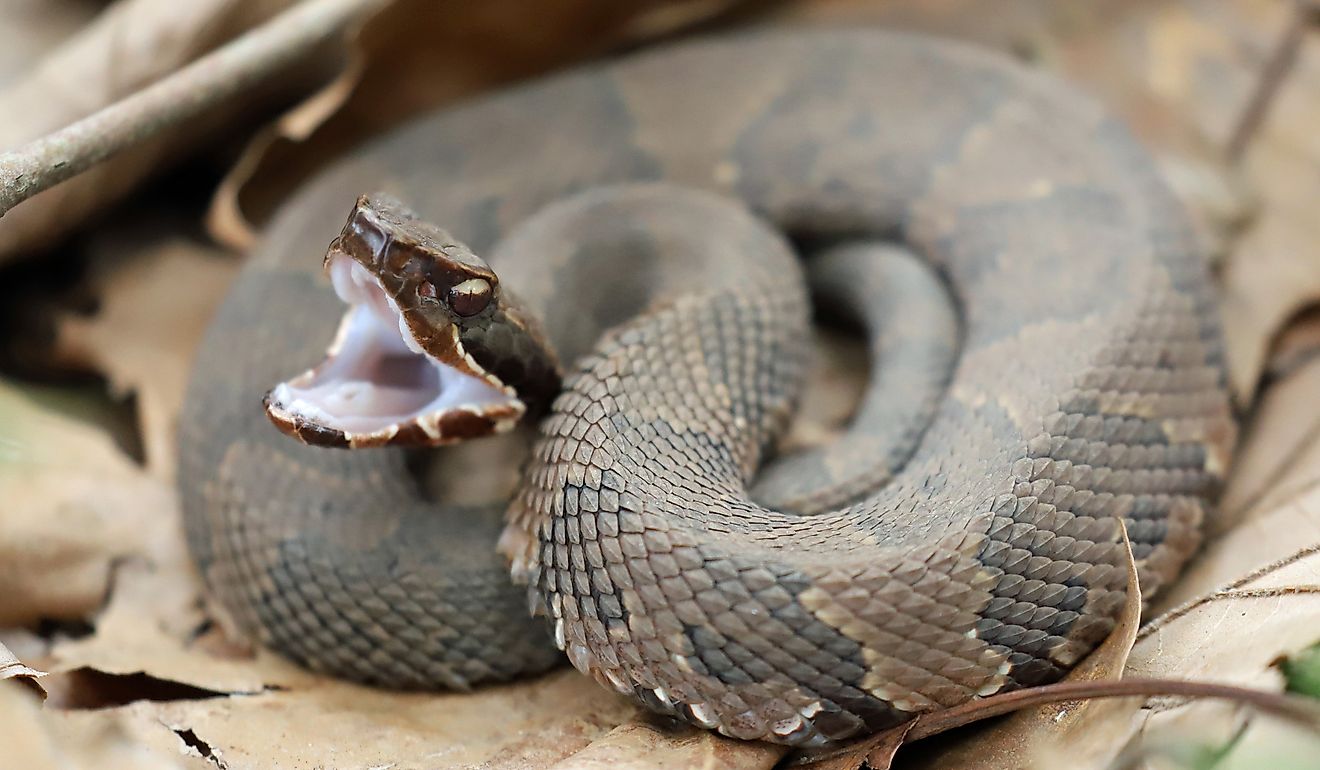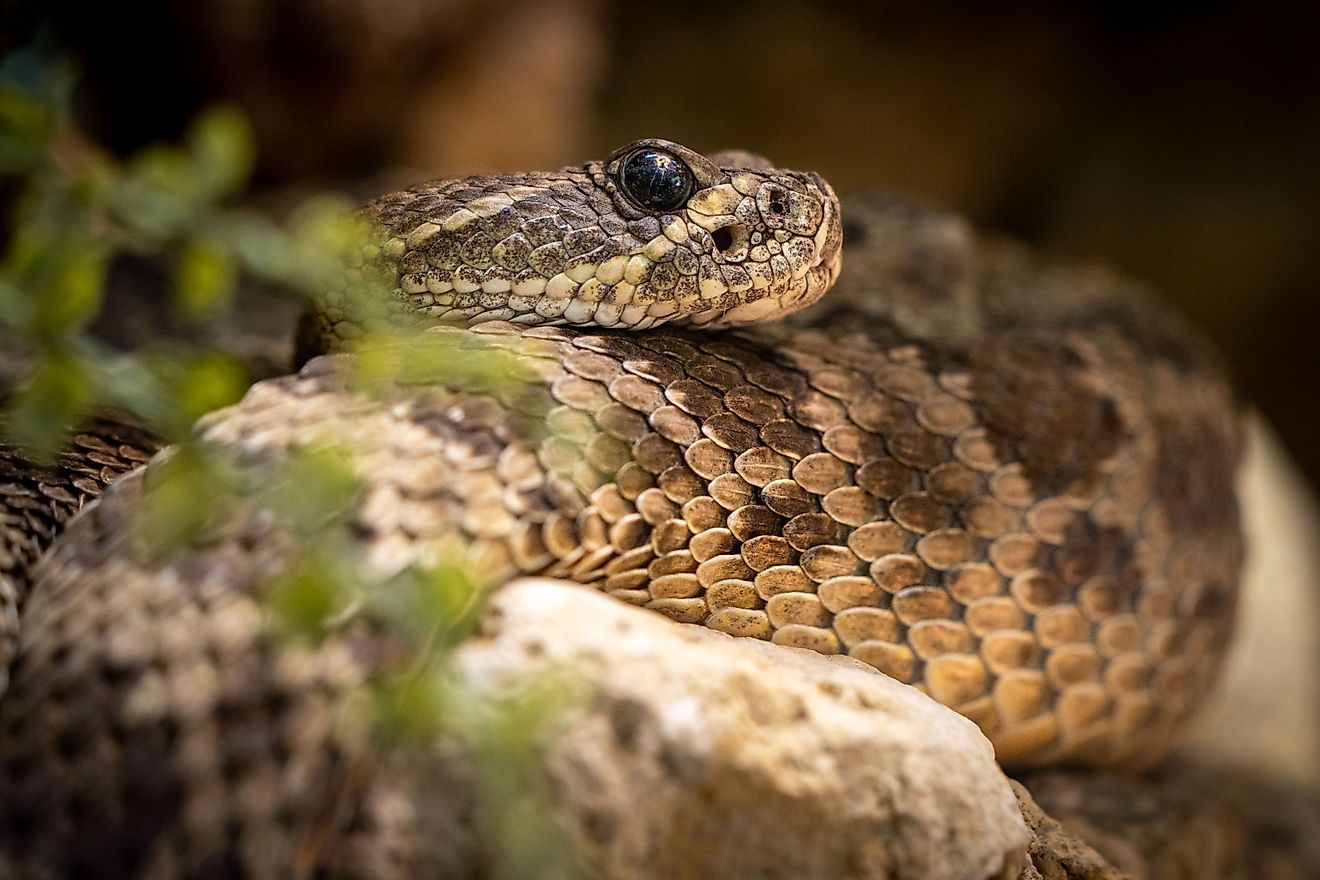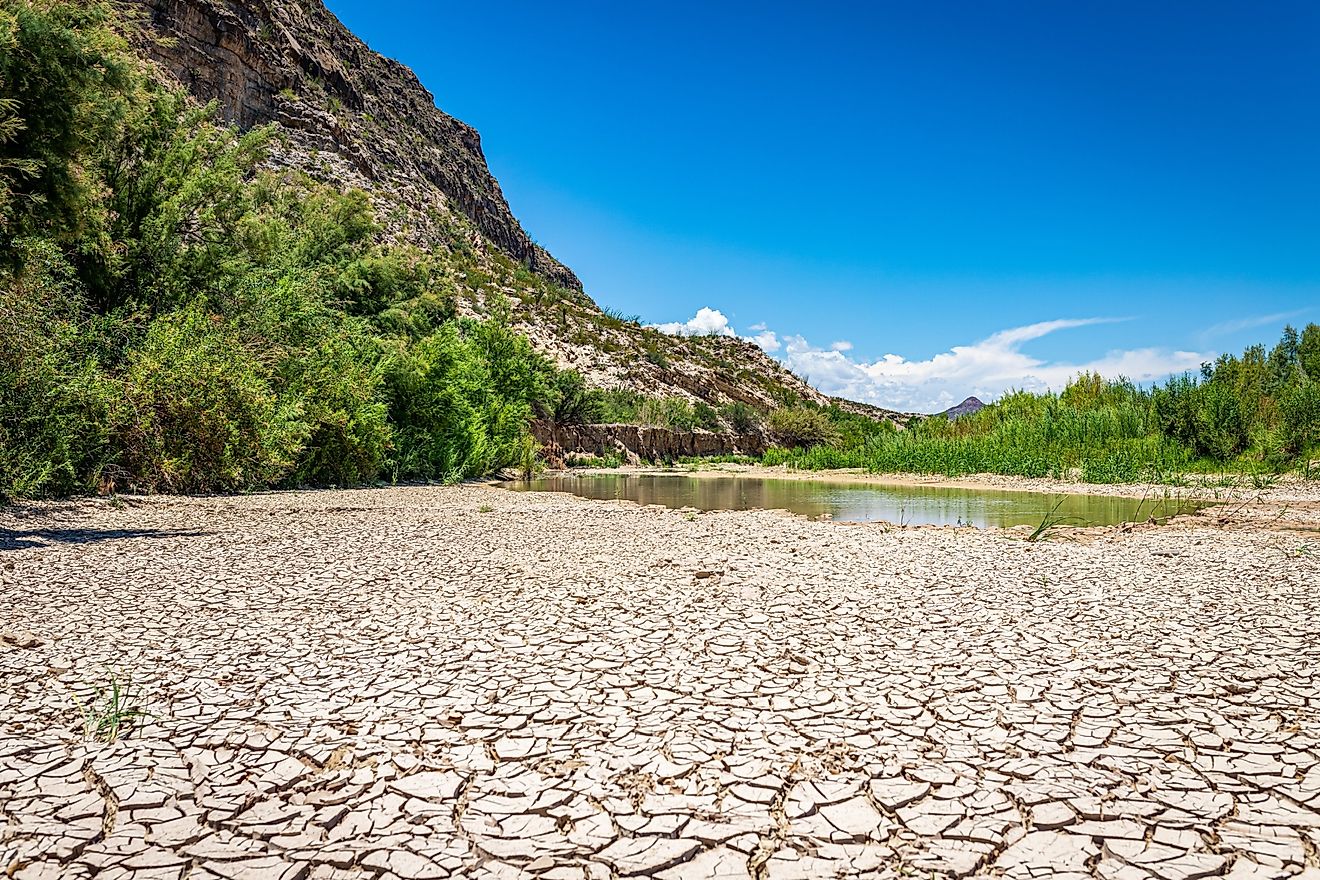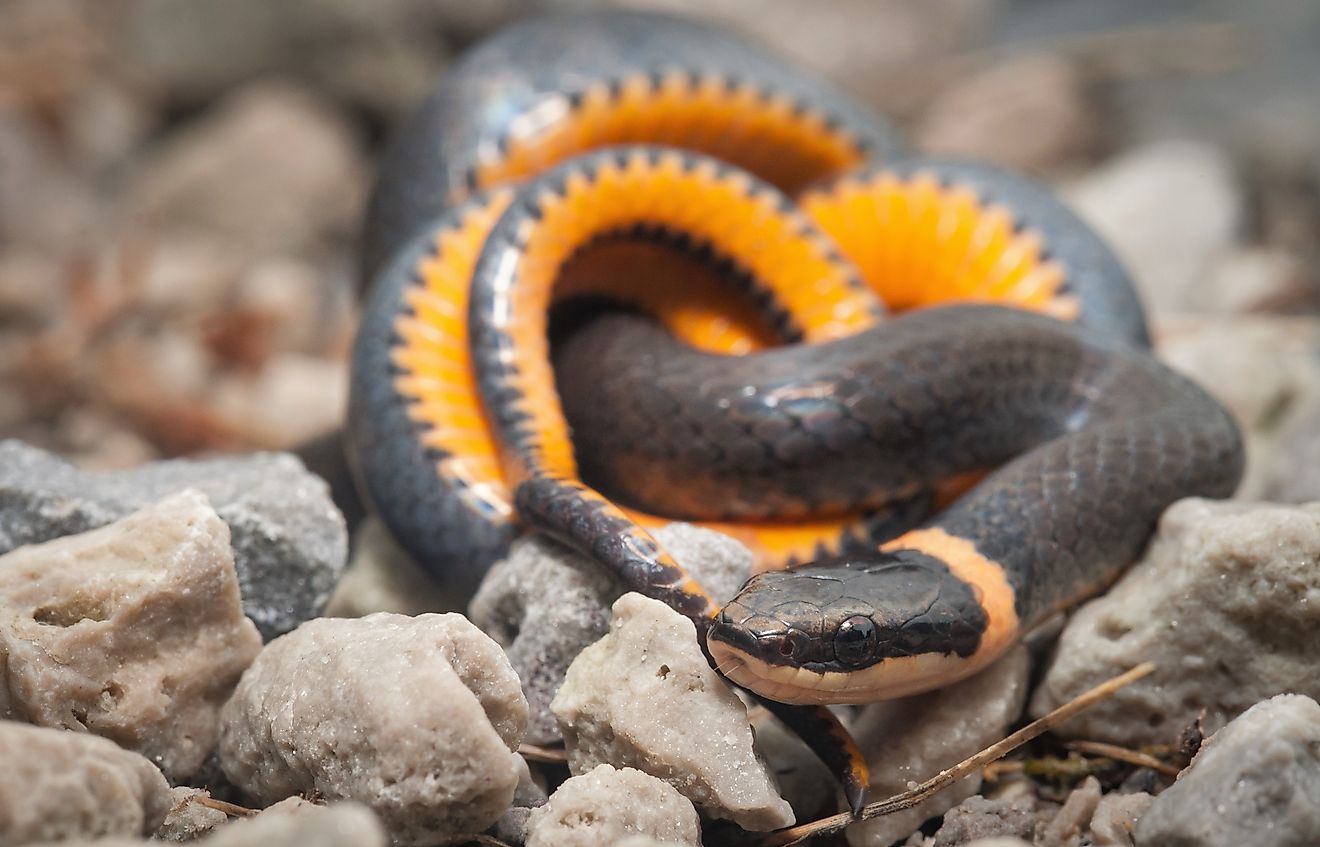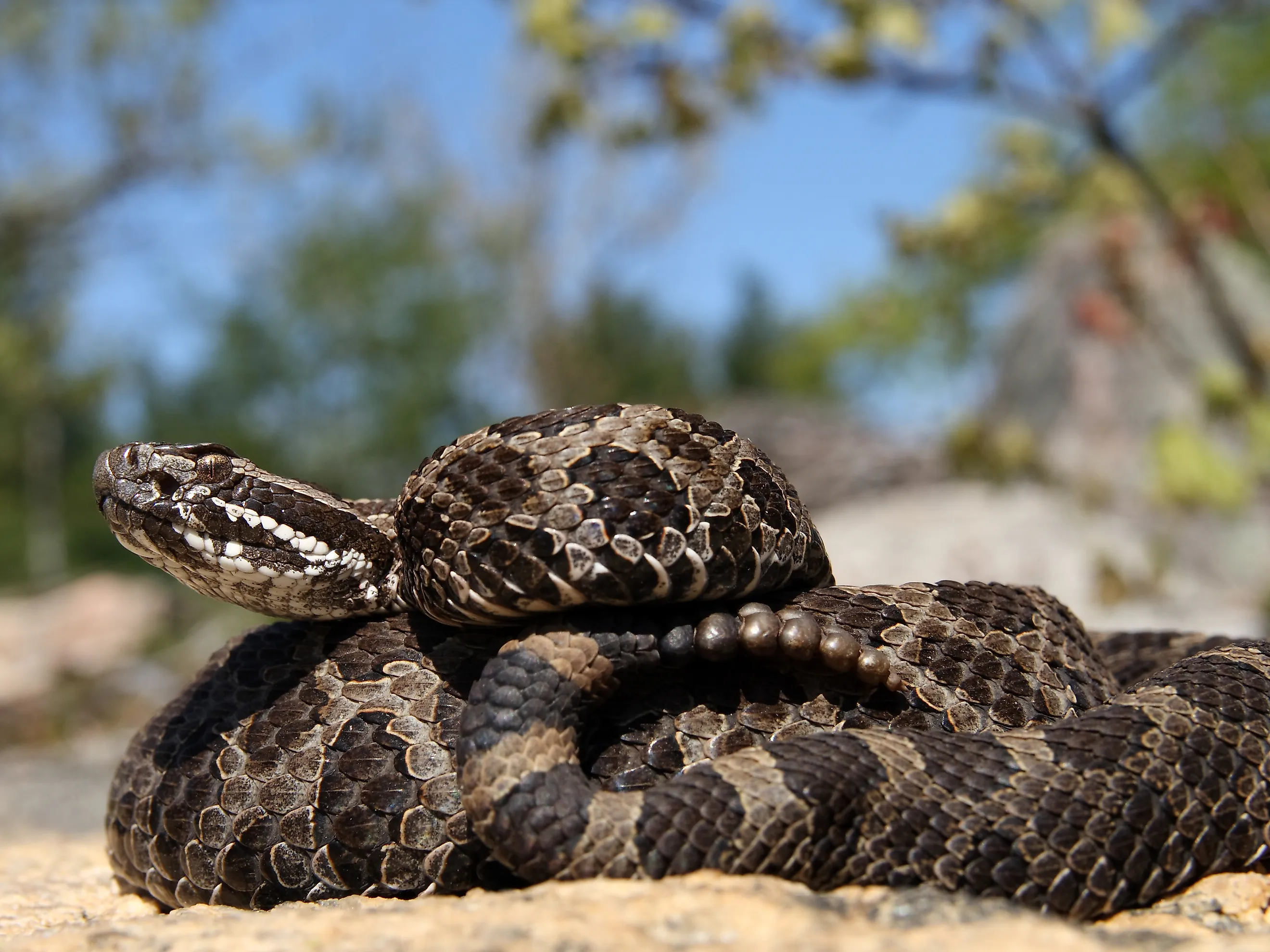
5 Most Snake-Filled Bodies Of Water In Ohio
Ohio’s numerous lakes, reservoirs, rivers, and wetlands are home to some of the state’s biggest populations of reptiles, including snakes. While few of its native snakes are truly aggressive, many are highly active in the warm, shallow environments with abundant prey that can be found peppered throughout the landscape. These five bodies of water are home to various snake species that are commonly seen and heard slithering about, especially in spring and summer when people are most likely to be hiking, paddling, and spending time outdoors in this Midwestern state.
Lake Hope
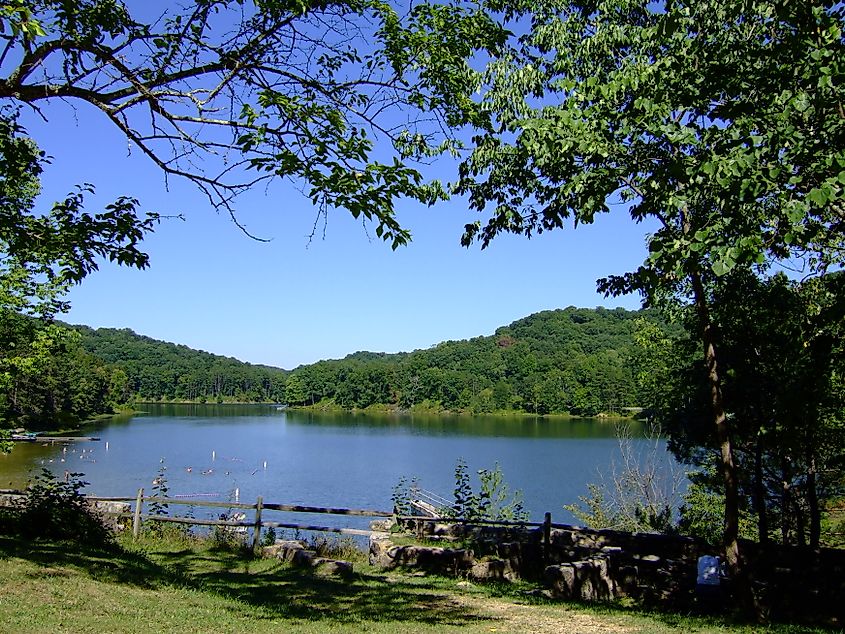
Located within Lake Hope State Park, in southeastern Ohio's Zaleski State Forest, Lake Hope is one of the top locations for snake encounters due to its surrounding wetlands, pristine woodlands, and rock-strewn shoreline that allow for wildlife to flourish. The area supports a high concentration of northern water snakes, sometimes called common water snakes, a non-venomous species known to thrive in quiet, freshwater lakes across much of the country. The combination of shallow coves, decaying vegetation like fallen trees, and ample fish populations creates an ideal habitat for them to hunt and breed in peace.
Hikers along the lake’s perimeter trails often catch sightings of these snakes hanging out on logs or sunbathing on the water’s edge. The lake’s remote setting and minimal boat traffic further support a stable ecosystem where reptiles, fish, and amphibians alike are left largely undisturbed, making it an excellent spot for nature lovers, too.
Killbuck Marsh Wildlife Area
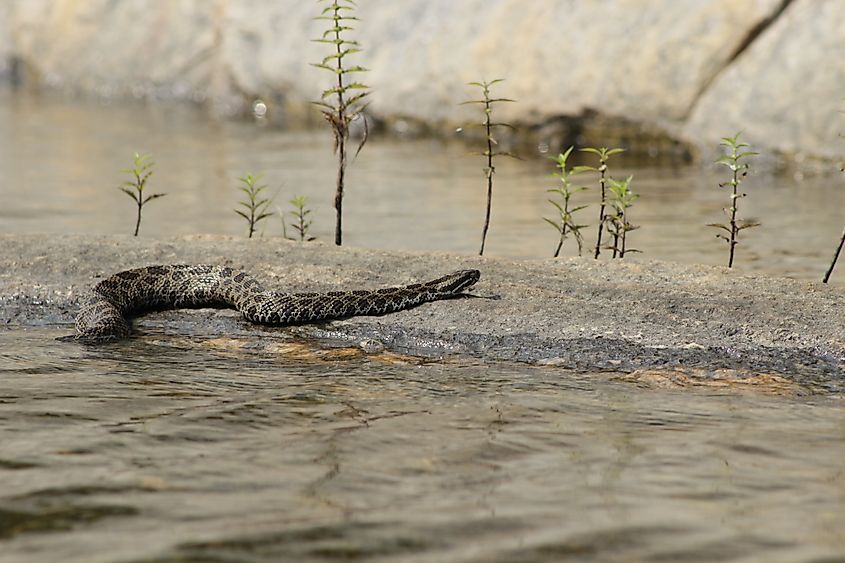
While not necessarily a singular body of water, Killbuck Marsh in Holmes and Wayne counties is Ohio’s largest wetland complex outside of the Lake Erie region. The slow-moving channels, stagnant pools, and seasonal flooding that can be found here create prime conditions for aquatic and semi-aquatic snake species alike.
Northern water snakes and eastern garter snakes are common, and massasauga rattlers have been observed in the area as well. The thick cattails and muddy banks provide cover, while the abundance of frogs, minnows, and small invertebrates that also thrive here ensures a constant food supply. Killbuck’s protected status limits human encroachment, allowing all sorts of local flora and fauna to remain stable and highly visible. Keep your eyes peeled during the peak summer months, as snakes are often seen crossing the park's network of footpaths and/or gliding through open water.
Salt Fork Lake
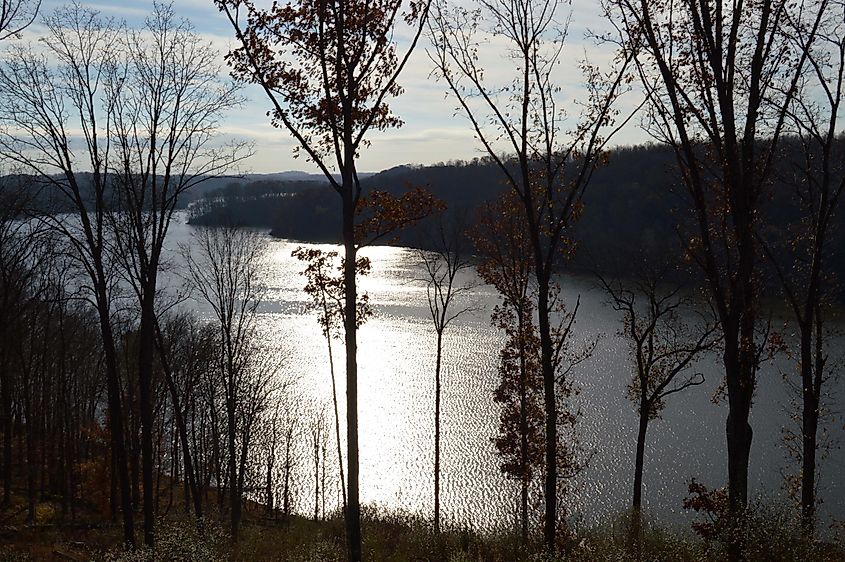
Resting within Ohio’s largest state park, Salt Fork Lake has a decent number of snakes in and around it, thanks in large part to its crooked shoreline and untouched coves. The lake’s irregular shape creates isolated pockets of shallow, warm water, which are perfect conditions for northern water snakes, garter snakes, and ringnecks, as well as plenty of dry, open, or lightly-wooded habitats for Ohio's state reptile, black racers. Queen snakes are less common in this area, but have been spotted.
Northerns, in particular, are often seen swimming across open water or coiled along boat ramps and fishing docks, in spots where human activity also tends to be the highest, so be sure to watch where you step! The nearby forested hills and expansive wetlands allow the other species to move between aquatic and terrestrial habitats with little disruption.
Caesar Creek Lake
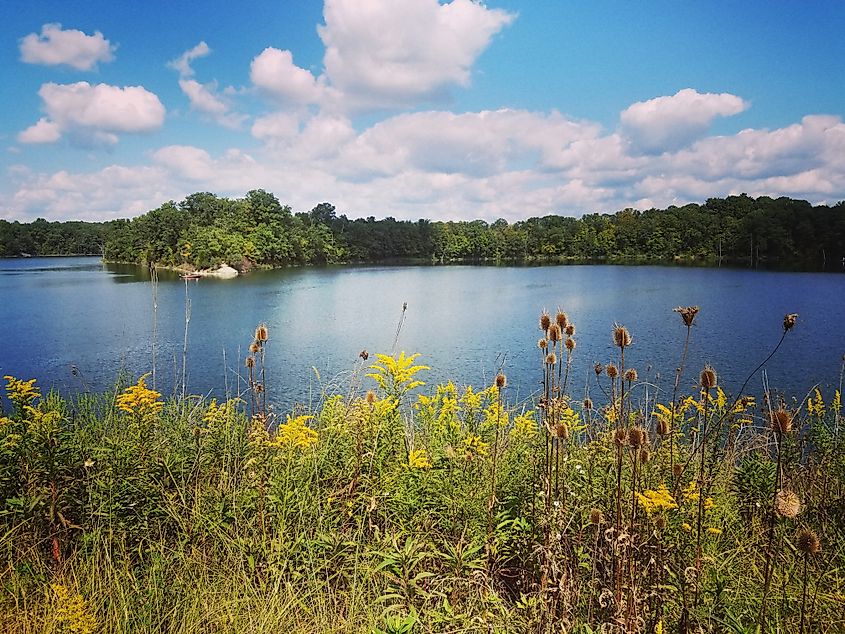
Caesar Creek Lake, in southwest Ohio, is a large reservoir surrounded by a nice mix of woodlands, wetlands, and distinctive limestone outcrops. Again, northern water snakes are frequently seen along the rocky banks and in shallow inlets of this body of water, where they prey on small fish and amphibians. Black rat snakes have also been spotted on land in the area.
Moreover, Caesar Lake’s extensive floodplain and the surrounding tributary system increase the range of suitable habitats for a variety of reptiles, attracting aquatic and semi-aquatic snakes alike. During warmer months, these creatures are often spotted near the spillway and around submerged and semi-submerged vegetation, the latter of which is more abundant when water levels rise.
While venomous snakes are not native to this part of the state, the high concentration of non-venomous, water-based species present makes Caesar Creek one of the more snake-active recreational lakes in Ohio. The high visibility of these slithery creatures, especially during the late spring and summer, makes it a regular topic of interest for local wildlife observers, hikers, and boaters.
Mosquito Creek Lake
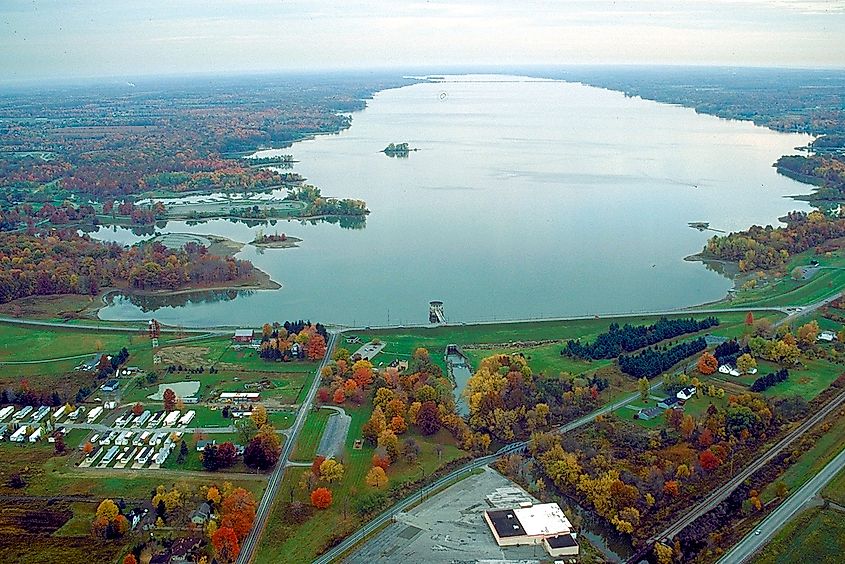
Northeastern Ohio’s Mosquito Creek Lake is bordered by marshes, backwaters, and wood-blanketed lowlands that support one of the region’s most active snake populations. The northern water snake dominates the shoreline, often visible near boat docks, along riprap, and in cattail thickets, with copper-bellied water snakes having been spotted here as well.
The lake’s proximity to the Mosquito Creek Wildlife Area allows a high concentration of amphibians and small fish, providing ample food sources for snakes and other predators, both in the water and near it. On the other hand, land-based species, like eastern fox snakes and sometimes even the venomous eastern massasauga rattlesnake, take advantage of these resources.
Know Where to Find Ohio's Snakes
From forested reservoirs to sprawling marshes and beyond, Ohio’s waters teem with a variety of life, forming a major part of the state’s diverse ecosystems. Whether you’re exploring, researching, or simply feeding your own curiosity, knowing where snakes are most active can help you better understand and respectfully navigate the Buckeye State's surprisingly reptile-rich environments the next time you decide to venture into the great outdoors.

